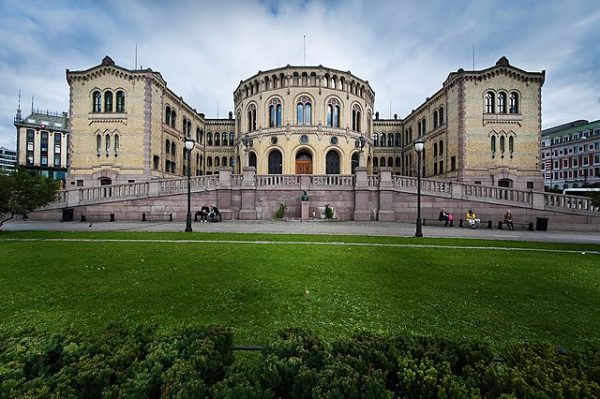The Absence – and Presence – of Daniel Ellsberg
by Norman Solomon
On a warm evening almost a decade ago, I sat under the stars with Daniel Ellsberg while he talked about nuclear war with alarming intensity. He was most of the way through writing his last and most important book, The Doomsday Machine: Confessions of a Nuclear War Planner. Somehow, he had set aside the denial so many people rely on to cope with a world that could suddenly end in unimaginable horror. Listening, I felt more and more frightened. Dan knew what he was talking about.
After working inside this country’s doomsday machinery, even drafting nuclear war plans for the Pentagon during President John F. Kennedy’s administration, Dan Ellsberg had gained intricate perspectives on what greased the bureaucratic wheels, personal ambitions, and political messaging of the warfare state. Deceptions about arranging for the ultimate violence of thermonuclear omnicide were of a piece with routine falsehoods about American war-making. It was easy enough to get away with lying, he told me: “How difficult is it to deceive the public? I would say, as a former insider, one becomes aware: it’s not difficult to deceive them. First of all, you’re often telling them what they would like to believe — that we’re better than other people, we’re superior in our morality and our perceptions of the world.”
Dan had made history in 1971 by revealing the top-secret Pentagon Papers, exposing the constant litany of official lies that accompanied the U.S. escalation of the Vietnam War. In response, the government used the blunderbuss of the World War I-era Espionage Act to prosecute him. At age 41, he faced a possible prison sentence of more than 100 years. But his trial ended abruptly with all charges dismissed when the Nixon administration’s illegal interference in the case came to light in mid-1972. Five decades later, he reflected: “Looking back, the chance that I would get out of 12 felony counts from Richard Nixon was close to zero. It was a miracle.”
That miracle enabled Dan to keep on speaking, writing, researching, and protesting for the rest of his life. (In those five decades, he averaged nearly two arrests per year for civil disobedience.) He worked tirelessly to prevent and oppose a succession of new American wars. And he consistently gave eloquent public support as well as warm personal solidarity to heroic whistleblowers — Thomas Drake, Katharine Gun, Daniel Hale, Matthew Hoh, Chelsea Manning, Edward Snowden, Jeffrey Sterling, Mordechai Vanunu, Ann Wright, and others — who sacrificed much to challenge deadly patterns of official deceit.
Unauthorized Freedom of Speech
Dan often spoke out for freeing WikiLeaks publisher Julian Assange, whose work had revealed devastating secret U.S. documents on America’s wars in Afghanistan and Iraq. At the end of a visit in June 2015, when they said goodbye inside Ecuador’s embassy in London, I saw that both men were on the verge of tears. At that point, Assange was three years into his asylum at that embassy, with no end in sight.
Secretly indicted in the United States, Assange remained in the Ecuadorian embassy for nearly four more years until London police dragged him off to prison. Hours later, in a radio interview, Dan said: “Julian Assange is the first journalist to be indicted. If he is extradited to the U.S. and convicted, he will not be the last. The First Amendment is a pillar of our democracy and this is an assault on it. If freedom of speech is violated to this extent, our republic is in danger. Unauthorized disclosures are the lifeblood of the republic.”
Unauthorized disclosures were the essence of what WikiLeaks had published and what Dan had provided with the Pentagon Papers. Similarly, countless exposés about U.S. government war crimes became possible due to the courage of Chelsea Manning, and profuse front-page news about the government’s systematic violations of the Fourth Amendment resulted from Edward Snowden’s bravery. While gladly publishing some of their revelations, major American newspapers largely refused to defend their rights.
Such dynamics were all too familiar to Dan. He told me that the attitude toward him of the New York Times, which won a Pulitzer Prize with its huge Pentagon Papers scoop, was akin to a district attorney’s view of a “snitch” – useful but distasteful.
In recent times, Dan detested the smug media paradigm of “Ellsberg good, Snowden bad.” So, he pushed back against the theme as rendered by New Yorker staff writer Malcolm Gladwell, who wrote a lengthy piece along those lines in late 2016. Dan quickly responded with a letter to the editor, which never appeared.
The New Yorker certainly could have found room to print Dan’s letter, which said: “I couldn’t disagree more with Gladwell’s overall account.” The letter was just under 300 words; the Gladwell piece had run more than 5,000. While promoting the “Ellsberg good, Snowden bad” trope, the New Yorker did not let readers know that Ellsberg himself completely rejected it:
“Each of us, having earned privileged access to secret information, saw unconstitutional, dangerously wrong policies ongoing by our government. (In Snowden’s case, he discovered blatantly criminal violations of our Fourth Amendment right to privacy, on a scale that threatens our democracy.) We found our superiors, up to the presidents, were deeply complicit and clearly unwilling either to expose, reform, or end the wrongdoing.
“Each of us chose to sacrifice careers, and possibly a lifetime’s freedom, to reveal to the public, Congress, and the courts what had long been going on in secret from them. We hoped, each with some success, to allow our democratic system to bring about desperately needed change.
“The truth is there are no whistleblowers, in fact no one on earth, with whom I identify more closely than with Edward Snowden.
“Here is one difference between us that is deeply real to me: Edward Snowden, when he was 30 years old, did what I could and should have done – what I profoundly wish I had done – when I was his age, instead of 10 years later.”
As he encouraged whistleblowing, Dan often expressed regret that he hadn’t engaged in it sooner. During the summer of 2014, a billboard was on display at bus stops in Washington, D.C., featuring a quote from Dan — with big letters at the top saying “DON’T DO WHAT I DID. DON’T WAIT,” followed by “until a new war has started, don’t wait until thousands more have died, before you tell the truth with documents that reveal lies or crimes or internal projections of costs and dangers. You might save a war’s worth of lives.” Two whistleblowers who had been U.S. diplomats, Matthew Hoh and Ann Wright, unveiled the billboard at a bus stop near the State Department.
A Grotesque Situation of Existential Danger
Above all, Daniel Ellsberg was preoccupied with opposing policies that could lead to nuclear war. “No policies in human history have more deserved to be recognized as immoral. Or insane,” he wrote in The Doomsday Machine. “The story of how this calamitous predicament came about and how and why it has persisted for over half a century is a chronicle of human madness.”
It’s fitting that the events set for Daniel Ellsberg Week (ending on June 16th, the first anniversary of when Dan passed away) will include at least one protest at a Northrop Grumman facility. That company has a $13.3 billion contract to develop a new version of an intercontinental ballistic missile (ICBM), which – as Dan frequently emphasized – is the most dangerous of all nuclear weapons. He was eager to awaken Congress to scientific data about “nuclear winter” and the imperative of shutting down ICBMs to reduce the risks of nuclear war.
Five years ago, several of us from the Institute for Public Accuracy hand-delivered paperbacks of The Doomsday Machine – with a personalized letter from Dan to each member of the House and Senate – to all 535 congressional offices on Capitol Hill. “I am concerned that the public, most members of Congress, and possibly even high members of the Executive branch have remained in the dark, or in a state of denial, about the implications of rigorous studies by environmental scientists over the last dozen years,” Dan wrote near the top of his two-page letter. Those studies “confirm that using even a large fraction of the existing U.S. or Russian nuclear weapons that are on high alert would bring about nuclear winter, leading to global famine and near extinction of humanity.”
Dan’s letter singled out the urgency of one “immediate step” in particular: “to eliminate entirely our redundant, vulnerable, and destabilizing land-based ICBM force.” Unlike air-launched and sea-based nuclear weapons, which are not vulnerable to attack, the ICBMs are vulnerable to a preemptive strike and so are “poised to launch” on the basis of “ten-minute warning signals that may be – and have been, on both sides – false alarms, which press leadership to ‘use them or lose them.’”
As Dan pointed out, “It is in the power of Congress to decouple the hair-trigger on our system by defunding and dismantling the current land-based Minuteman missiles and rejecting funding for their proposed replacements. The same holds for lower-yield weapons for first use against Russia, on submarines or in Europe, which are detonators for escalation to nuclear winter.”
In essence, Dan was telling members of Congress to do their job, with the fate of the earth and its inhabitants hanging in the balance:
“This grotesque situation of existential danger has evolved in secret in the almost total absence of congressional oversight, investigations, or hearings. It is time for Congress to remedy this by preparing for first-ever hearings on current nuclear doctrine and ‘options,’ and by demanding objective, authoritative scientific studies of their full consequences including fire, smoke, nuclear winter, and famine. Classified studies of nuclear winter using actual details of existing attack plans, never yet done by the Pentagon but necessarily involving its directed cooperation, could be done by the National Academy of Sciences, requested and funded by Congress.”
But Dan’s letter was distinctly out of sync with Congress. Few in office then – or now – have publicly acknowledged that such a “grotesque situation of existential danger” really exists. And even fewer have been willing to break from the current Cold War mindset that continues to fuel the rush to global annihilation. On matters of foreign policy and nuclear weapons, the Congressional Record is mainly a compendium of arrogance and delusion, in sharp contrast to the treasure trove of Dan’s profound insights preserved at Ellsberg.net.
Humanism and Realism to Remember
Clear as he was about the overarching scourge of militarism embraced by the leaders of both major parties, Dan was emphatic about not equating the two parties at election time. He understood that efforts like Green Party presidential campaigns are misguided at best. But, as he said dryly, he did favor third parties – on the right (“the more the better”). He knew what some self-described progressives have failed to recognize as the usual reality of the U.S. electoral system: right-wing third parties help the left, and left-wing third parties help the right.
Several weeks before the 2020 election, Dan addressed voters in the swing state of Michigan via an article he wrote for the Detroit Metro Times. Appearing under a headline no less relevant today – “Trump Is an Enemy of the Constitution and Must Be Defeated” – the piece said that “it’s now of transcendent importance to prevent him from gaining a second term.” Dan warned that “we’re facing an authoritarian threat to our democratic system of a kind we’ve never seen before,” making votes for Joe Biden in swing states crucial.
Dan’s mix of deep humanism and realism was in harmony with his aversion to contorting logic to suit rigid ideology. Bad as current realities were, he said, it was manifestly untrue that things couldn’t get worse. He had no intention of ignoring the very real dangers of nuclear war or fascism.
During the last few months of his life, after disclosing a diagnosis of inoperable pancreatic cancer, Dan reached many millions of people with an intensive schedule of interviews. Journalists were mostly eager to ask him about events related to the Pentagon Papers. While he said many important things in response to such questions, Dan most wanted to talk about the unhinged momentum of the nuclear arms race and the ominous U.S. frenzy of antagonism toward Russia and China lacking any sense of genuine diplomacy.
While he can no longer speak to the world about the latest developments, Dan Ellsberg will continue to speak directly to hearts and minds about the extreme evils of our time – and the potential for overcoming them with love in action.
A free documentary film premiering now, “A Common Insanity: A Conversation with Daniel Ellsberg About Nuclear Weapons,” concludes with these words from Dan as he looks straight at us: “Can humanity survive the nuclear era? We don’t know. I choose to act as if we have a chance.”
Follow TomDispatch on Twitter and join us on Facebook. Check out the newest Dispatch Books, John Feffer’s new dystopian novel, Songlands (the final one in his Splinterlands series), Beverly Gologorsky’s novel Every Body Has a Story, and Tom Engelhardt’s A Nation Unmade by War, as well as Alfred McCoy’s In the Shadows of the American Century: The Rise and Decline of U.S. Global Power, John Dower’s The Violent American Century: War and Terror Since World War II, and Ann Jones’s They Were Soldiers: How the Wounded Return from America’s Wars: The Untold Story.




